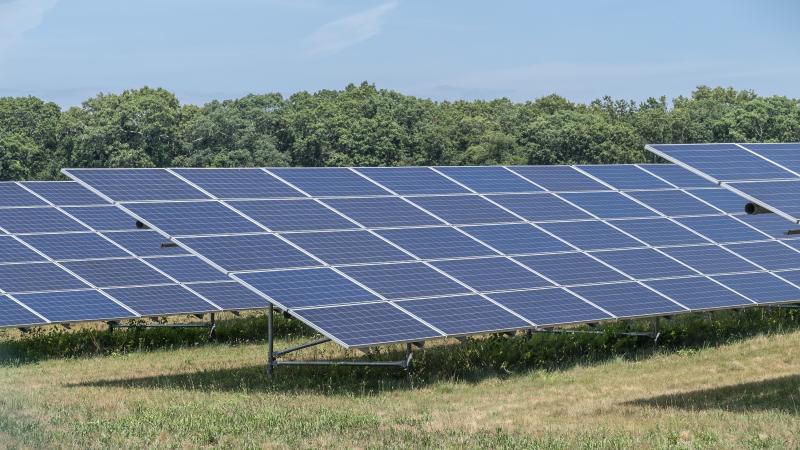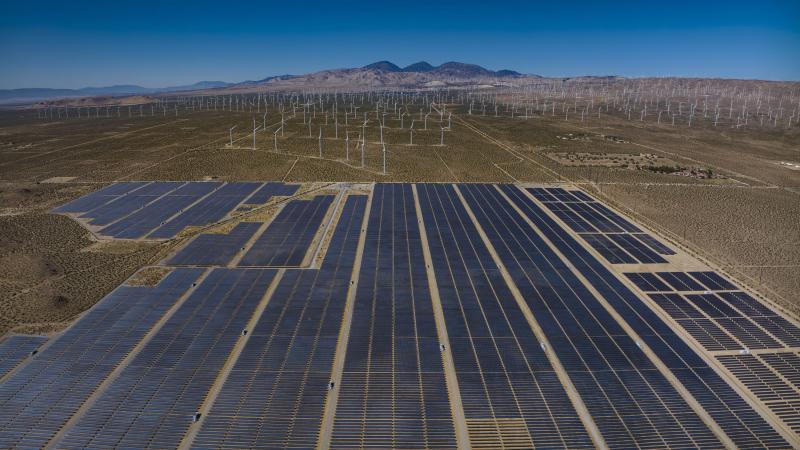As media and environmental groups dismiss offshore wind concerns, whale advocates continue fight
Last December, the AP reported that an offshore wind project being developed off the coast of New Jersey will likely, according to the National Oceanic and Atmospheric Administration (NOAA), “adversely affect” whales but “will not seriously harm or kill them.” The article doesn’t explain how something can be adversely affected but not be seriously harmed.
In 2022, 100 marine scientists launched a campaign to stop oil and gas leases in the Gulf of Mexico, over concerns that the activity could impact a rare species of whale. EarthJustice, an environmentalist nonprofit that litigates environmental issues, joined in the fight.
While oil spills can directly kill whales, the main threat to marine life from oil and gas development is vessel strikes and underwater noise.
Some whale advocates are saying that industrial development of massive offshore wind projects along the east coast threatens endangered whales with vessel strikes and underwater noise. Rather than jump in to protest offshore wind development, EarthJustice celebrated when the Inflation Reduction Act passed, because it provides large federal subsidies to the offshore wind industry.
While many environmental groups support the offshore wind industry, the Associated Press report downplays concerns about offshore wind’s impact on whales as nothing more than a political maneuver from conservatives, calling the concerns “unfounded.” “Experts say there’s no evidence that limited wind farm construction on the Atlantic Coast has directly resulted in any whale deaths, despite politically motivated statements suggesting a link,” the AP asserted.
Last December, the AP reported that an offshore wind project being developed off the coast of New Jersey will likely, according to the National Oceanic and Atmospheric Administration (NOAA), “adversely affect” whales but “will not seriously harm or kill them.”
The article doesn’t explain how something can be adversely affected but not be seriously harmed.
Follow the Money
Lisa Linowes, co-founder of the Save The Right Whales Coalition, told Just The News that it’s true it’s very hard to find a dead whale that you can prove died directly from offshore wind operations. Trying to find a whale that has died as a result of being hit by a boat doing work on a wind farm, or trace a whale that’s disoriented from the noise, which subsequently leads to its death, is no easy task.
“That's the only way we can get a direct link, is if a whale becomes disoriented, temporarily deafened by the noise, and ends up straying into one of the nearby lanes, traffic lanes, shipping lanes,” Linowes said.
What they do have is a correlation between offshore wind development and an increase in mortality of the endangered North Atlantic right whale, something that would normally raise alarms with environmental groups and media outlets.
Linowes, who was featured in "Thrown To The Wind," a documentary about offshore wind's impacts on whales, suggests that the AP's dismissive reporting on the whale deaths may have something to do with the funding the outlet receives for its climate reporting.
The AP discloses at the bottom of the article, after it explains that “less reliance on fossil fuels” would help solve climate change impacts on whales, that it receives funding from “private foundations” specifically for its climate coverage. But it doesn’t mention that these foundations are opposed to fossil fuels and heavily promote the renewable energy industry.
The funders backing the AP’s climate coverage include the Rockefeller Foundation, which had $704 million in revenues in 2021. The organization is dedicated to addressing climate change by transitioning away from fossil fuels with wind and solar projects.
The AP also receives funding from Quadrivium, which explains on its website that “climate change threatens the security and stability of our country and our world.” In 2021,the group provided funding to a $673 million renewable energy infrastructure fund to help build out wind and solar projects. More funding for AP’s climate reporting came from the Hewlett Foundation, which has invested $175 million in grants in support of renewable energy projects.
The Washington Free Beacon reported this week that the AP received the equivalent of $300,000 from a Danish nonprofit that seeks the “rapid phase-out of fossil fuels,” citing the group’s annual report. Though the AP received the funding in December 2022, the Beacon reported, it only listed the group as one of its philanthropic supporters this month.
Associated Press spokeswoman Nicole Meir told the Washington Free Beacon that the organization maintains "complete control" over content produced through its philanthropic partnerships, and that "no funder has any influence over AP journalism."
Cumulative impacts
Bob Stern, president of Save LBI, an organization trying to raise awareness of the impacts of offshore wind development on whales, told Just The News that there are three ways that the industry is harming whales.
The first is that vessel surveys are conducted before any construction begins. They use noise devices to assess the geology of the seabed, which helps with citing the location of the towers. “Unfortunately, that noise also spreads down into the water, and can affect the whales and other marine life,” Stern said.
This, he said, is what Save LBI believes caused dead whales to begin showing up on the New Jersey beaches last year. Another other impact on whales is the pile driving that’s done to build a foundation to support the wind turbine. Stern said the foundations of these towers are approximately 45 feet in diameter, with a steel shell around it that’s a few inches thick.
“And this needs to be driven into the seabed to support the turbine. Obviously, that takes a lot of pile driving and a lot of energy to do. Each one of those strikes creates a significant amount of noise,” Stern said.
Environmental Progress and “Public” announced a sequel to “Thrown To The Wind” Monday. The sequel features acousticians measuring the sound levels of a pile-driving operation for Vineyard Wind, a project off the coast of Martha’s Vineyard.
According to the documentary’s trailer, the sound they measured is equivalent to the blast of a 155-millimeter Howitzer.
Stern also believes that the turbines themselves, which are large and growing, will likely create further disturbances for the whales throughout their lifetimes. “We've done a lot of analysis showing that the long term operation of the service is going to create noise that extends quite far from the wind turbine complex,” Stern said.
The problem with much of the analysis that federal agencies are doing on offshore wind stations, Stern said, is they’re looking at each project’s impact on whales individually. The migration corridors of the whales, of which a few hundred remain, go from Florida and Georgia, and then up to New England and Canada.
“It’s not just a New Jersey problem,” Stern said.
Despite the concerns of ocean life advocates, the Biden administration is set on deploying 30 gigawatts of offshore wind by 2030. The Vineyard Wind project, which began providing small amounts of power from a single operational turbine this week, is aiming to provide 800 megawatts with its 62 turbines.
To reach 30 gigawatts will require a lot of offshore wind projects up and down the East Coast, and Stern said that the National Oceanic and Atmospheric Administration (NOAA) which is under the direction of the U.S. Department of Commerce, is not looking at the cumulative impacts of all this industrial development throughout the whales’ migration corridor.
“From an analytic standpoint, it just does not make sense to make a migration problem along the entire east coast. To analyze that a piece at a time, it’s just not a sensible way to do it,” Stern said. One reason the agency may be less inclined to take a closer analysis of the whale impacts, he said, could be related to the Biden administration’s desire to build out offshore wind.
Stern said the matter will likely have to be settled in court, and the lack of an overall cumulative analysis of the impact of offshore wind on the East Coast will be a central point of the case. “Unfortunately, we have been unable to get the federal agencies to listen and possibly do it better. So we're gearing up for those lawsuits. Not that I'm crazy about filing lawsuits, but it seems to be the only place now where you can get a fair hearing of the facts,” Stern said.
The Facts Inside Our Reporter's Notebook
Links
- 100 marine scientists launched a campaign
- EarthJustice, an environmentalist nonprofit
- vessel strikes and underwater noise
- celebrated when the Inflation Reduction Act passed
- Associated Press reported last month that these concerns are âunfounded.â
- the AP reported that an offshore wind
- Save The Right Whales Coalition
- correlation between offshore wind development and an increase in mortality
- documentary about offshore wind's impacts on whales
- specifically for its climate coverage
- Rockefeller Foundation
- which had $704 million in revenues in 2021
- dedicated to addressing climate change by transitioning away from fossil fuels
- Quadrivium
- $673 million renewable energy infrastructure
- Hewlett Foundation
- invested $175 million in grants in support of renewable energy projects
- Washington Free Beacon reported this week
- annual report
- Associated Press spokeswoman Nicole Meir told the Washington Free Beacon
- begin showing up on the New Jersey beaches last year
- announced a sequel
- pile driving
- which are large and growing
- which began providing small amounts of power from a single operational turbine this week
















